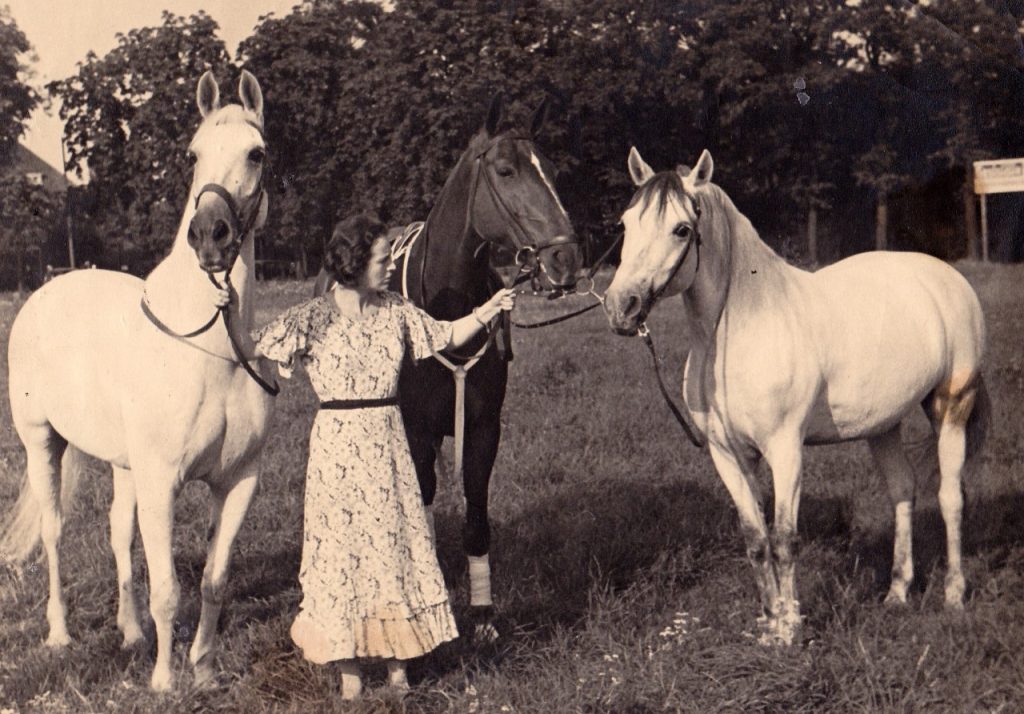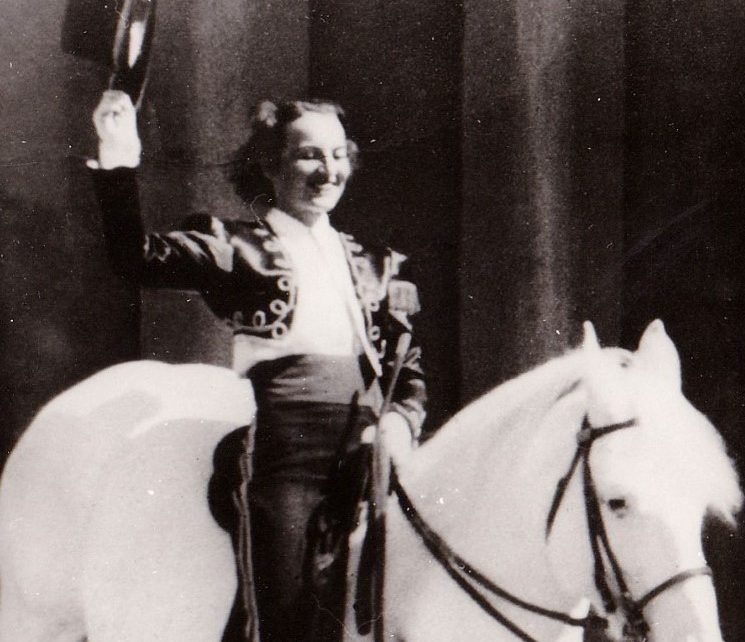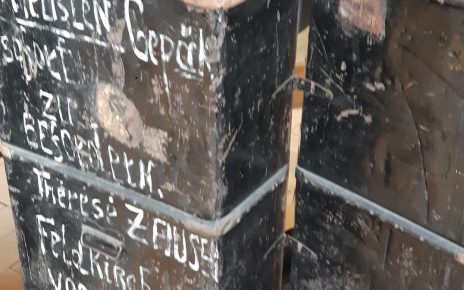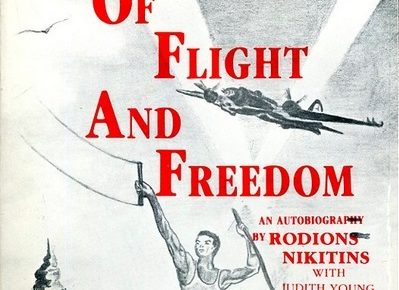Constance Micaela Busch was a third-generation member of one of the oldest circus dynasties in Germany. The famous Circus Busch was founded by her grandfather Paul and grandmother Constance Busch on June 29th 1884 in Svendborg, Denmark. In 1888, the circus moved to Germany. Three years later, they opened a circus building in Altona, Hamburg.
Her mother Paula Busch married the high school teacher Dr. Alois Uhl in 1911. Two years later, on May 7th, 1913, Micaela was born. In her youth, Micaela joined the Free Socialist Youth movement and got early influenced by an anti-Nazi conviction. She started to study medicine after school but dropped out and became the youngest German equestrienne of her time. Her teacher was Karl Reinsch. She made her debut alongside the famous equestrienne Therese Renz.
As part of the new construction plans for the Nazi German capital, Hitler ordered the demolition of the stationary building of the Circus Busch in Berlin in 1934. To compensate the loss of income, Paula Busch bought the (half-) Jewish circus of the Strassburger family in 1935 for 200.000 RM. The new travelling Circus Busch toured mainly through Germany and was led by Micaela and her husband Emil Wacker, whom she married on August 19th, 1936. Their son Paul Busch was born on March 15th,1937. After her divorce with Wacker in 1942, Micaela was solely responsible for the company, which now operated as Circus Micaela Busch. Paula Busch took care of the stationary circus buildings in Hamburg and Breslau (Polish Wroclaw).

In the summer of 1937, the demolition of the Berlin circus building of the Busch family took place. The application for a new building was managed by Paula Busch with a lot of difficulty. The construction plans were drawn up for several years but were ultimately not carried out. Micaela was so outraged by the closure of the old circus building that she wanted to drive into the city center, armed with a pistol, and with the intention of shooting the city commissioner. Fortunately, her mother Paula Busch was able to stop her.
In the spring of 1943, Hans Strassburger left the Netherlands to work for Circus Busch in Breslau. He presented own animal groups and performed an equestrian act together with Micaela. In the same year Hans Strassburger was drafted into the Wehrmacht. After a few months, he was released from the army service and returned to the Circus Busch and his animals. In November 1943, Micaela learned that she had been reported to the Gestapo. Her private secretary had accused her of favoring Jews.
Micaela decided to flee and left Germany with her son Paul and Hans Strassburger. This was achieved with the support of the siblings Gilbert, Sacha, and Nadia Houcke, who presented their trained animals at the Circus Busch. The Houckes, who came from an old circus aristocracy, had not only the French but also the Swedish citizenship and operated a small circus at Furuviksparken, a zoo and amusement park in Gävle, situated at central Sweden’s East Cost. The group from Breslau arrived in Gävle with horses, elephants, and tigers. Micaela became a Swedish citizen due to her marriage to Swedish record swimmer Sven Gerhold, but this relationship did not last for long. However, gaining the Swedish citizenship turned out to be unbelievably valuable, because it prevented her animals from being confiscated by the allied forces after World War II.
In the post-war period, Micaela and Hans Strassburger founded the Suecia circus. This was a company designed to lease trained animal groups, either presented by Micaela and Hans Strassburger or rented out without their show participation to other circuses.
In 1948, Paula Busch went to Sweden to join her daughter. They had not seen each other since Micaela’s escape from Breslau. In 1951, Micaela Busch and Hans Strassburger performed with their horses and elephants at Circus Roland in the Federal Republic of Germany. In 1952 Paula and Micaela Busch founded a new Circus Busch. The program included all animal groups of the Swedish company Suecia and several artists from Sweden. Micaela, however, decided to leave the maternal company after only one season. Instead, she went with her own circus on an East Asia tour in November 1952.
At first, it was a successful step for Micaela. She remained in East Asia even the following year. Micaela’s circus was part of the shootings for the film “Stars in Colombo,” which brought her great success. Her shows were visited by more than half a million people which led to Micaela’s decision to extend the tour to Malaysia, Siam, and Indochina. However, this route brought the circus into financial difficulties. Micaela needed a local financier to advance her company the travel expenses to come to Singapore who demanded 40% of the circus’ daily takings. Moreover, a Chinese manager embezzled about 40,000 DM in Hong Kong. These events put the circus in economic difficulties. In addition, there was political unrest in the region, which prevented Micaela from traveling to Indochina, Siam, and Indonesia. Finally, her circus was confiscated for insolvency in Manila in 1954. Micaela’s dream to return to Germany with profits and build a new circus building ended right there
In the seasons of 1957 and 1958, Micaela toured with the Swedish circus Mijares-Schreiber in Finland as artistic director. In 1960 she and her son returned to Germany to support her mother Paula in the management of a new circus project and took part in the program as an equestrienne. When the new circus went bankrupt in 1961, Micaela left for Sweden that same night, where she spent the rest of her life with short interruptions. On September 24, 1969, Micaela died of cancer.
Author: Johanna Prantz
Hauptquellen:
Busch, Paul: Mein Leben – Ein Zirkus. Berlin 2001.
Busch, Paula: Das Spiel meines Lebens. Erinnerungen. Berlin 1992.
Nissing, Herbert St.: Strassburger. Geschichte eines jüdischen Zirkus. Dormagen 1993.
Winkler, Gisela: Zirkus Busch. Geschichte einer Manege in Berlin. Berlin 1998.
Many thanks to Dietmar and Gisela Winkler, who commented on the text and enriched it with their expertise.





